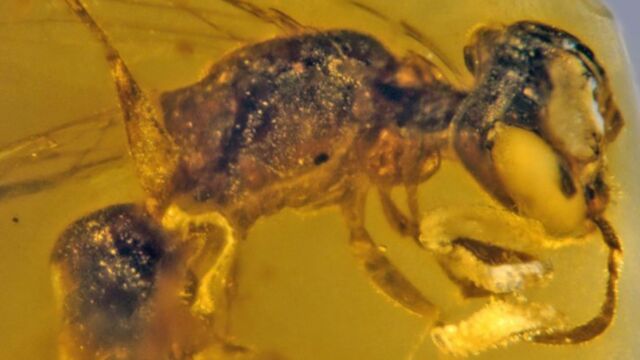A 100-Million-Year-Old Bee Was Found Trapped In Amber

A bee trapped in amber was found in Myanmar. It is believed to be the oldest bee fossil discovered to date.
Fossils of bees, there are many of them around the world. But in many cases, they're less than 65 million years old. So the specimens found are rather 'recent,' and the differences with our current bees are not very pronounced.
Discover our latest podcast
Named 'Discoscapa apicula' by George Poinar Jr., the Oregon State University researcher who discovered it, this bee fossil was found in Myanmar (formerly Burma).
More under this adMore under this adA major discovery
Perfectly preserved, this bee could be 100 million years old. Traces of pollen are clearly visible, as well as triungulins, i.e. beetle larvae.
The results, published in the scientific journal BioOne Complete, already allow a better understanding of the evolution of bees, but also of flowering plants.
More under this adMore under this adSurprisingly, bees evolved from apoid wasps, which are carnivorous. But then how did bees become the only group of pollinators to feed only on nectar and pollen? This fossil could help answer that question.
The missing link?
In his study, George Poinar Jr. explained that this bee trapped in amber has many similarities to modern bees. Such as the rounded pronotal lobe, feathery hairs...
More under this adMore under this adBut he also insisted on the fact that it shares common traits with apoid wasps, i.e. the 'ancestors' of bees, such as the position of the antennae or the presence of certain specific veins.

These different characteristics, both modern and primitive, make this bee unique and particularly interesting. Further analysis will be carried out to learn more about this specimen.
How did it get trapped in amber?
Another interesting fact is that this bee was already a palynivore, i.e. it fed on pollen. In fact, several pollen grains were found on its body, as well as in the rest of the fossil.
More under this adMore under this ad'The pollen grains show that the bee had recently visited one or more flowers. Further evidence of this is the presence of 21 beetle triungulins in the amber, five of which were in direct contact with the bee'
Unfortunately, these larvae on its body may have been the cause of its death. At least that's what the author of the study assumes.
More under this adMore under this ad'It is possible that the high triungulin count caused the bee to accidentally fly into the amber'
A sad end for the insect, but a godsend for the scientists. Amber, formed from the resin of some conifers, is particularly good for keeping insects trapped inside.
More under this ad